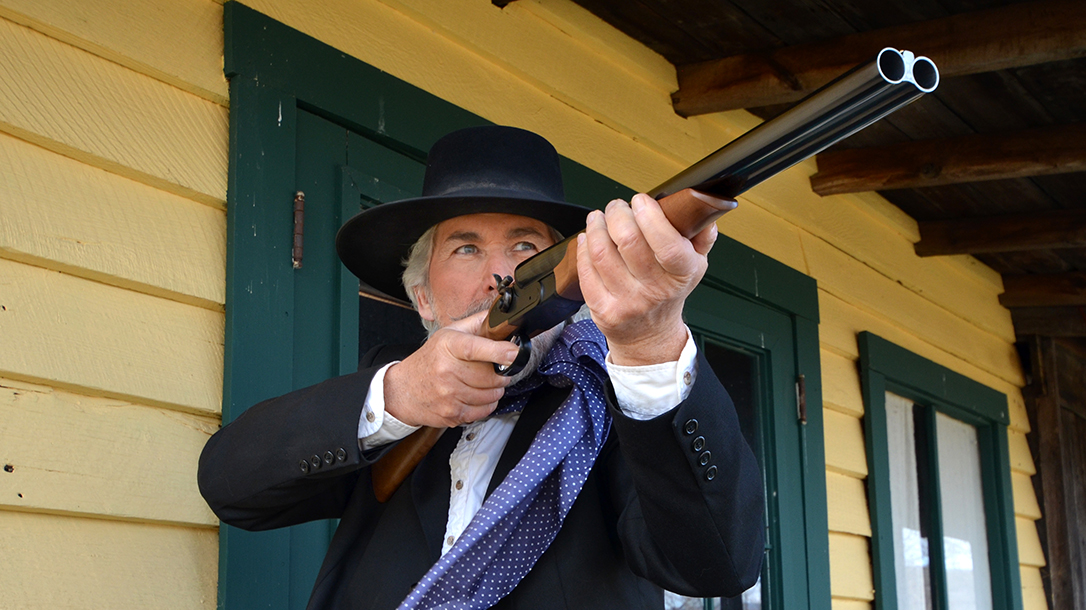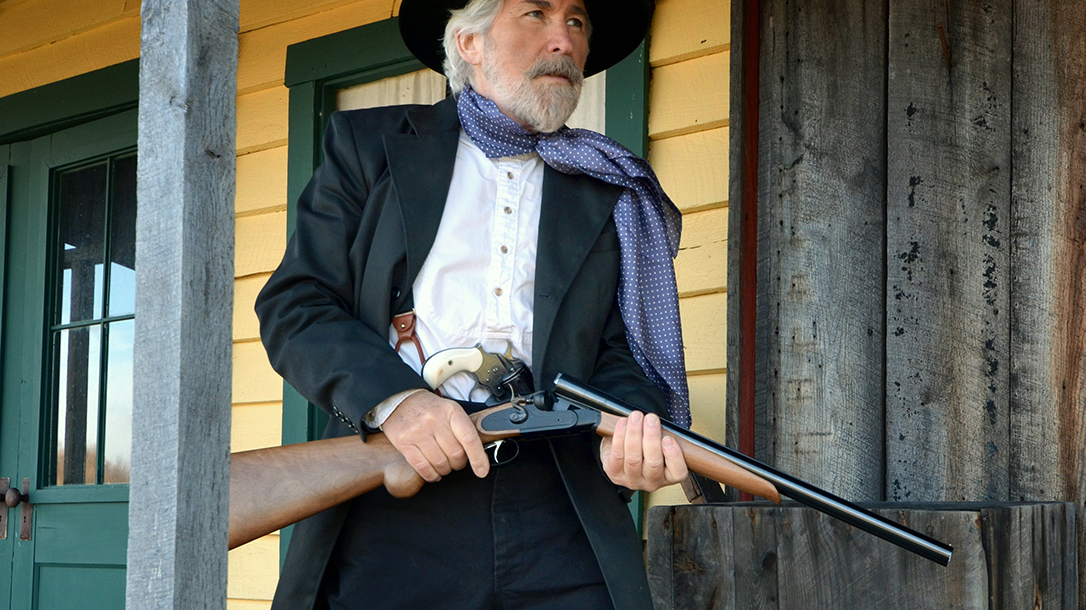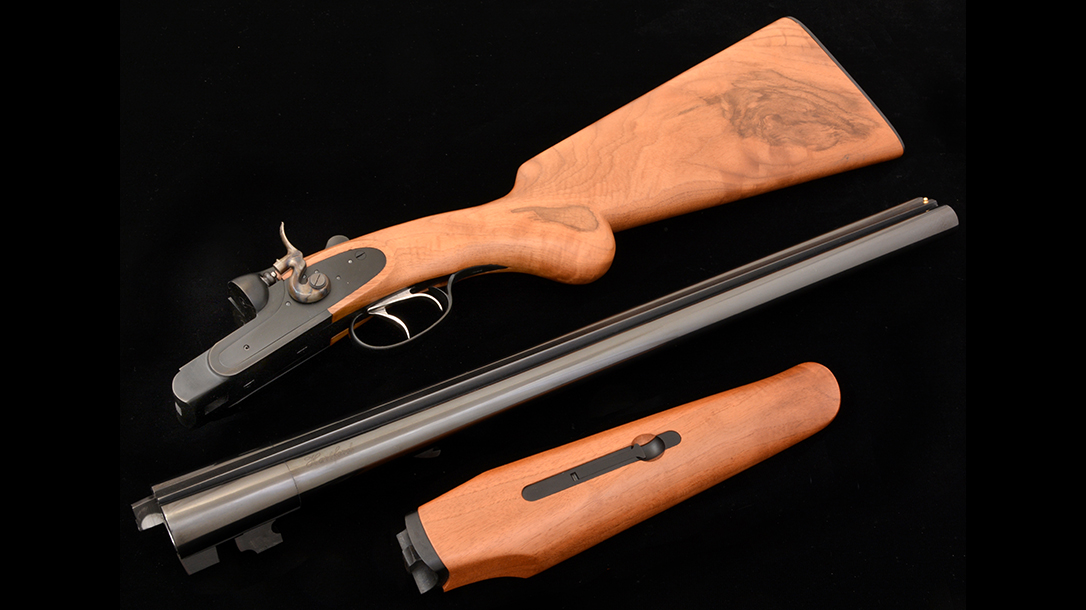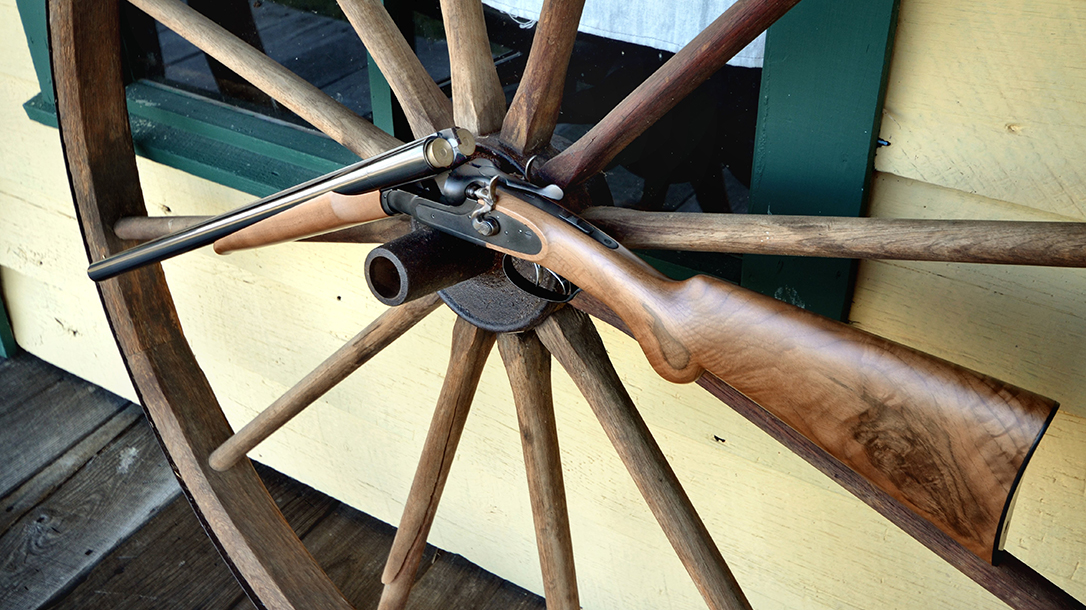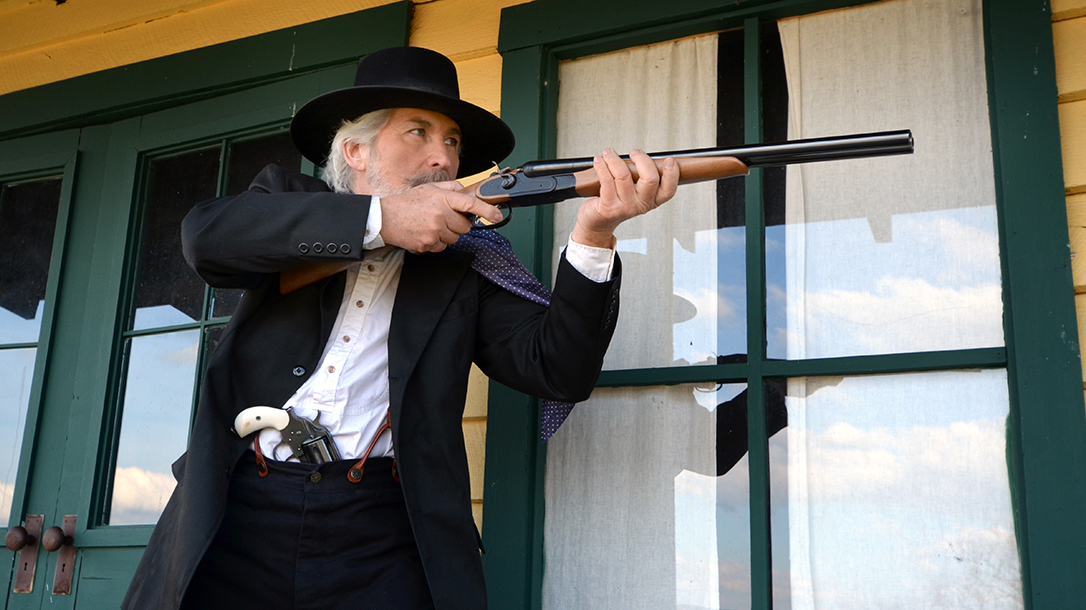One might regard the handgun as the easiest and most practical self-defense weapon of choice in the Old West, but for a great majority of men, especially ranchers, farmers and lawmen who often had to face down a rowdy group of liquored-up cowboys, a 12-gauge shotgun was the most practical, most intimidating and easiest-to-handle firearm on the American frontier.
Either for self-defense or hunting, the double-barreled shotgun has many purposes that pistols alone could not equal. A simple shotgun in the hands of a farmer, his wife, son or daughter, defending their property or home, was far more menacing. Even frontier town lawmen and outlaws reached for a shotgun when the numbers were not in their favor. A double-hammer gun might not have been as glamorous as a shiny Colt Peacemaker. However, it was most certainly the one gun that no one wanted to be on the wrong side of.
Advertisement — Continue Reading Below
American Shotguns
There were more than 40 American shotgun-makers in business during the 19th century. Among the more prestigious makes was Parker Brothers in Meridian, Connecticut, which built shotguns from the 1860s until 1942. Some of the most beautiful double-hammer guns ever produced bore the
Parker Brothers name. Other notable 19th century hammer and hammerless doubles were produced by L.C. Smith, Ithaca, Stevens (known for its famous three-trigger shotgun, with the forward trigger releasing the barrels), Lefever and Winchester (with its double guns imported from Great Britain and sold under the Winchester name). All of these various models are highly regarded today by collectors. But the shotguns most commonly used by lawmen, ranchers, farmers, businessmen and highwaymen were those built by Remington and Colt—two manufacturers better known for their handguns.
Advertisement — Continue Reading Below
Colt, in Hartford, Conn., and its closest competitor, Remington, in Ilion, N.Y., offered their own brand of shotguns beginning in the 1870s, while Winchester, preferring to concentrate on improving and expanding its line of rifles, continued to import side-by-side shotguns from Great Britain well into the 1880s. The British-built Winchester Model 1879 shotguns had “Winchester Repeating Arms Co. New Haven Conn U.S.A.” marked atop their barrels. However, these elegant British double guns bearing a recognized American name still came up short compared to those from Colt and Remington, the two most popular and affordable double guns of the 1870s and 1880s.
Remington introduced its first models in 1874, and like many other guns built in Ilion, New York, the shotguns had a hyphenated name as well: Remington-Whitmore, for A.E. Whitmore’s 1871 patent. The first model was built through 1878 when an improved version, minus the Whitmore hyphen, was introduced. The Model 1878 was also known as the “New Model Heavy Shotgun” and was built through the mid-1880s. The 1878 double-hammer gun earned its name because it was only offered in 10 gauge, whereas its predecessor had been available in 10- and 12-gauge models. The majority of early Remington doubles were available with either 28- or 30-inch barrels.
The Hartford Signature
Advertisement — Continue Reading Below
Colt’s double-barreled Model 1878 shotguns were among the most popular of the late 19th century. Regarded as one of the finest American double guns ever built, the 12-gauge models were used by everyone from farmers and lawmen to shop owners and outlaws. A total of 22,683 were manufactured from 1878 until 1889. Guns were available in both 10 and 12 gauges, and barrel lengths ranged from 18 to 34 inches. In addition, Colt built a very limited number of double rifles of the same design chambered in .45-70, .45-85 Express, .45-90 and .45-100.
The Model 1878 was joined by the Model 1883 Hammerless, which remained in production until 1895. These were available in 8-, 10- and 12-gauge models, with a full range of barrel lengths from 18 to 36 inches. The Model 1883 Hammerless became the king of American doubles with a little over 8,000 built.
Advertisement — Continue Reading Below
Later this year, EMF Company and Pietta will introduce their Hartford version of the famous Colt Hammerless double gun. But for now, their new 12-gauge, double-hammer gun takes center stage.
Coach Gun Specs
The Colt Model 1878 was the inspiration for the new Pietta 12 gauge being offered through EMF as the 1878 Hartford Coach Gun. This hefty double has 20-inch barrels made from 4140 steel, a steel buttplate, hammer spurs that are slightly shorter and more upright than the original Colt’s, and a varnished Turkish walnut stock and forend. It is neither inexpensive nor overly priced at $1,095. That rings especially true when compared to EMF’s Pedersoli-made 1878 Wyatt Earp double, which, for a hefty $1,600, offers a handsome color-casehardened frame, blued barrels and a deluxe walnut stock and forend.
Advertisement — Continue Reading Below
The 1878 Hartford Coach Gun has nicely polished and blued barrels, with the Hartford name in tall script on the rear of the right barrel, and a flat blue forged-steel receiver and lever; the only case colors are on the hammers. It does have a round-knob pistol grip as well as a very accurate triggerguard and trigger configuration. The 1878 Hartford Coach Gun is clean, rugged and simple. However, it lacks the Colt’s fine checkering and wrist contours, which are found on the more expensive Wyatt Earp model.
The Hartford Coach Gun goes together effortlessly and uses an Anson & Deeley boxlock action, which was originally developed in 1875 for Westley Richards & Company. The Hartford’s welded-steel barrels mount using a monoblock with two lugs that engage a frame-mounted horizontal wedge. The wedge is moved out of place for mounting the barrels by operating the release lever, and engages when the action is closed; the barrels are secured with a splinter-type forend.
The break-action lever is easy to thumb to the right. The shotgun is so well balanced and smooth in operation that you can open and close the action with one hand. The hammers, while a little shorter than the Colt’s, and with slightly less curve at the top of the checkered spurs, are still easy enough to double-cock with one sweep of the hand. Lower-priced double-hammer guns are rarely this easy to handle.
Advertisement — Continue Reading Below
Range Testing
With an overall length of 37 inches (and a 14.5-inch length of pull), 20-inch cylinder-bore barrels and an unloaded weight of 7.16 pounds, this is an ideal CAS shotgun. With that in mind, I tested the gun at a competition range of 16 yards. I used 2¾-inch Ten-X blackpowder shotshells dispensing 1 ounce of #7½ shot. I also threw in a pair of 00 buckshot rounds to see how well they patterned at that range.
Advertisement — Continue Reading Below
Back in the Old West, a scattergun in town would have been used at an even closer distances. In SASS, the closest range for shotgun competition is 8 yards. So at the maximum of 16 yards, we’re doubling down with the double gun. My target was an IPSC cardboard silhouette, which is 18 inches wide by 24 inches high at the shoulder. That makes it just slightly larger than a 16-by-16-inch SASS target for shotguns.
The 1878 Hartford Coach Gun uses a sliding tang safety similar to the design seen on the later Colt Model 1883 Hammerless. The original Colt hammer guns did not use a tang safety; on the EMF model, the sliding safety has to be manually engaged. The shotgun has manual extractors. The front trigger fires the right barrel while the rear trigger fires the left barrel. The front and rear triggers averaged 8.13 and 7.4 pounds, respectively.
From 16 yards out, two blasts of #7½ shot peppered the upper two-thirds of the target with the greatest concentration of shot in the A-zone and scattered shot in the B- and C-zones. The two 00 buckshot rounds clustered more than half of the 00 pellets into the A-zone, with the remainder spreading left and right in the C-zone. The majority of pellets from the two Ten-X birdshot rounds and two 00 buckshot shells all hit within a 12-inch circumference at 16 yards.
Advertisement — Continue Reading Below
Whether for putting food on the table or saving your own skin, back in the Old West, a double-barreled shotgun was the best gun you could grab for just about any situation. The advent of pump-action shotguns in the 1890s rewrote the books for lawmen and a lot of hunters as well. But for sport shooting, even in this century, a double gun is still an appropriate option, and the new EMF 1878 Hartford Coach Gun is a worthy competitor in the hammer gun market.
For more information on the 1878 Hartford Coach Gun, visit EMF-company.com or call 800-430-1310.
EMF 1878 Hartford Coach Gun Specifications
- Gauge: 12
- Barrels: 20 inches
- OA Length: 37 inches
- Weight: 7.16 pounds (empty)
- Stock: Turkish walnut
- Sights: Brass bead front
- Action: Break
- Finish: Blued
- Capacity: 2
- MSRP: $1,095
